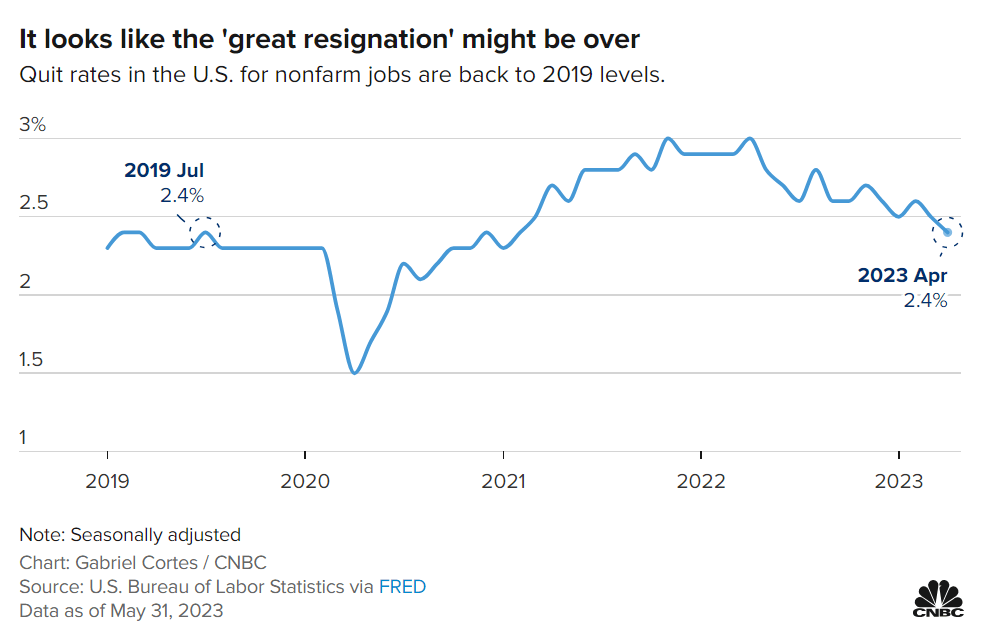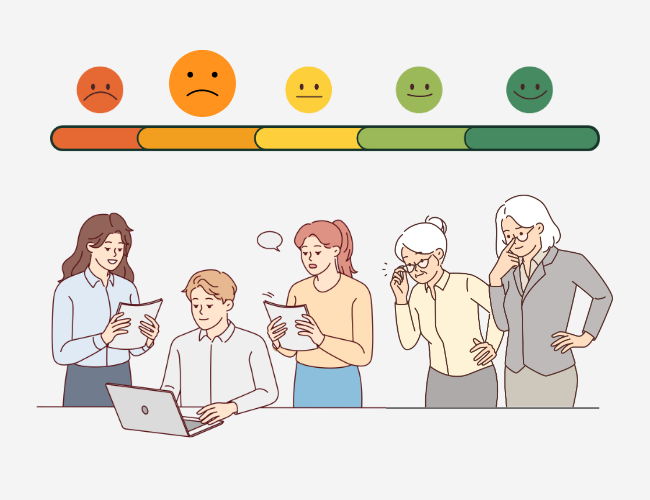Between 2021 and 2022, a staggering 50 million workers quit their jobs to pursue better opportunities and higher pay, a phenomenon dubbed as the Great Resignation. However, the record-high quit rate has steadily declined, converging once again with the pre-pandemic average.
It seems like the “Big Quit” is turning into the “Big Stay” in 2023.
Pressed for time? Here’s a quick summary…
- The labor market is returning to normal after the Great Resignation, and the power has shifted from employees to employers.
- Job openings remain above pre-pandemic levels, indicating ongoing employer demand. However, a downward trend may occur as the economy normalizes.
-
Companies are making strides with employee retention, with a decrease in voluntary turnover compared to the previous period.
- The rate of pay growth for job switchers has slowed down, particularly in the leisure and hospitality industry.
The Rise & Fall Of The Great Resignation
The circumstances of the pandemic, including the rise of remote work and the shift in public sentiment supporting workers’ rights, gave workers unparalleled leverage. Factors such as economic reopening, and a tight labor market further prompted them to quit in search of greener pastures. Employers scrambled to fill the gaps, raising wages at the fastest pace in decades to compete for scarce talent.
The quit rate dropped to 2.4% this April, down from a 3% peak at the same time last year. It’s now comparable with the monthly pre-pandemic average in 2019.

As the job market gradually cools, a shift in labor dynamics emerges. Staffing shortages are easing, indicating a more balanced supply of workers. Employees are adopting a more cautious stance toward the job outlook as the balance of power transitions back to employers.
Labor Market Update: Current State & Outlook
As the Great Resignation fades into the past, the current landscape of the labor market brings forth new implications for both job seekers and employers.

Job Opportunities
March witnessed a 20% decline in US job openings compared to the previous year’s peak of over 12 million job postings. However, the 9.6 million openings recorded in March still surpassed pre-pandemic levels. Notably, job openings rebounded to 10.1 million in April, signifying an ongoing employer demand.
A downward trend in job opportunities may occur as the economy gradually returns to normalcy. While conditions for job seekers may not be as favorable as during the height of the Great Resignation, there are still opportunities to be found.
Labor Force Participation
Companies are witnessing improved employee retention. In the first three months of 2023, voluntary turnover decreased by 5% compared with last year.
People are steadily rejoining the job market. Labor-force participation among workers aged 25 to 54 has risen beyond pre-pandemic levels. While participation for workers aged 55 and older and 25 and younger still lingers below pandemic levels, there has been a gradual upward trend overall.
Pay Growth
As job opportunities increase, so does the prospect of better pay. During the Great Resignation, workers experienced significant year-over-year pay increases when switching jobs, reaching a peak of 16.4% in June 2022.
However, the pay gains for job switchers has since slowed down. A looser labor market has reduced the urgency for employers to hire and decreased the likelihood of significant pay raises. In April of this year, the rate of pay growth for workers who switched jobs was 13.2%, marking the slowest pace of growth since November 2021.












